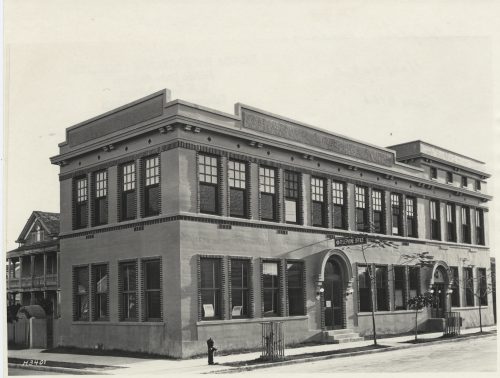Today in Keys History – Jan. 29, 2023

1827 – Former U.S. Navy Commodore David Porter, now commander-in-chief of the Mexican Navy, brought the frigate Liberator, the brig Victoria, and the brig Bravo to Key West in preparation for an attack on a Spanish Navy squadron in Cuba.
1836 – The temperature dropped to 44 degrees, the coldest recorded since the island had been settled.
1870 – Gonzalo Castañón, editor of the pro-Spanish, Havana newspaper Voz de Cuba, arrived in Key West intending to duel with his nemesis, Juan Maria Reyes, editor of the Key West Republicano, a paper that supported Cuba’s independence from Spain. Authorities intervened before the duel took place, but other Key West Cubans were upset by Castañón’s presence on the island. The Havana editor and his party were confronted at their hotel, insults were hurled, and Castañón struck one of the Key West men. Shots rang out from both sides, with multiple people hit by bullets; Castañón was mortally wounded. His death further inflamed political passions in both Key West and Cuba.
1913 – Three U.S. Navy submarines – the E-1, D-1, and D-3 – arrived at Key West, on their way to Guantanamo, Cuba, with the submarines Tonopah, Gastine, and D-2 expected the next day. All were to take on supplies and fuel before continuing their journey.
1916 – The Automatic Telephone Company of Key West moved its offices from the Kress Building to a newly-built, reinforced concrete structure at the corner of Simonton and Southard streets.
1930 – The Key West Chamber of Commerce, which had requested use of a U.S. government airplane to help eradicate mosquitoes, was informed by Congressman Ruth Bryan Owen that the use of aircraft for that purpose “had not become a method acceptable to the government.”
1951 – Norberg Thompson, one of Key West greatest industrialists, died at the age of 68. He had served as a Monroe County commissioner for 12 years and was Mayor of Key West from 1915 to 1917.
1961 – Teamsters Union President Jimmy Hoffa, who spent the weekend fishing, declared that “Key West has the most pleasant climate in the United States.”
1974 – The Navy declared 97 acres of the of Naval Station and Trumbo Annex land excess. Congress’ approval was required before the land could be disposed of by the General Services Administration.
1998 – Key West Police Chief John Kirvan resigned after three months on the job because he and his family had received death threats.
Information compiled by Tom Hambright, Historian Emeritus, and Dr. Corey Malcom, Lead Historian, Monroe County Public Library, Florida Keys History Center.
Image: The Southern Bell Telephone Building at 530 Southard St. Wright Langley Collection. Monroe County Public Library, Florida Keys History Center.